Discovering the hidden gems of the Western Cape: Cape Columbine and Witzands Aquifer nature reserves
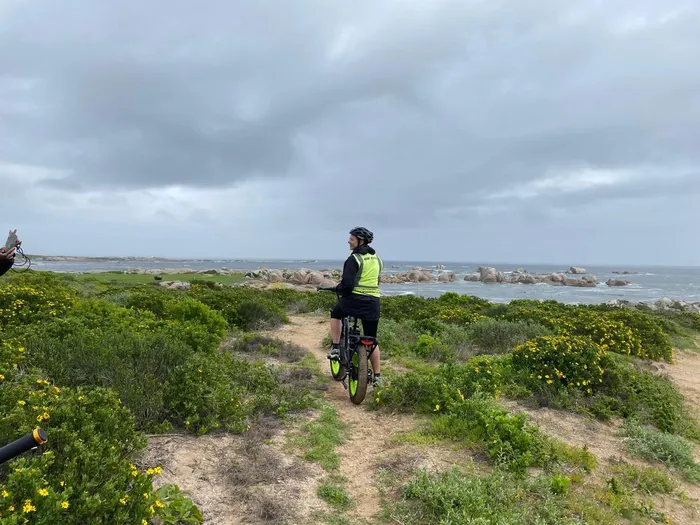
Cycling in Cape Columbine
Image: Sue Segar
One thing about living in the Western Cape is that just when you think you’ve discovered most of its glories, another paradisical nature spot pops up to surprise and delight. This province is surely the gift that keeps on giving! On a recent trip up the West Coast, I uncovered two new reserves I’d never encountered before: the Cape Columbine Nature Reserve and the Witzands Aquifer Nature Reserve.
Exploring Cape Columbine Nature Reserve
Known locally as Tietiesbaai, the Cape Columbine Nature Reserve spans 263 hectares and lies about five kilometres outside the charming village of Paternoster. Who’d have known you can jump on a bike here and, minutes later, enter a world of nature and history, complete with a historical lighthouse, all within the reserve?
Less than an hour’s drive from Cape Town, who’d have dreamt you could jump on a quad bike and take an exhilarating, slightly hair-raising ride through the imposing dunes? Our three-day getaway—sneakily starting on a Sunday and lopping off two workdays—coincided perfectly with the blooming of the West Coast flowers, allowing us to explore both of these treasures and realise how much one can pack into a few days in such a special place.
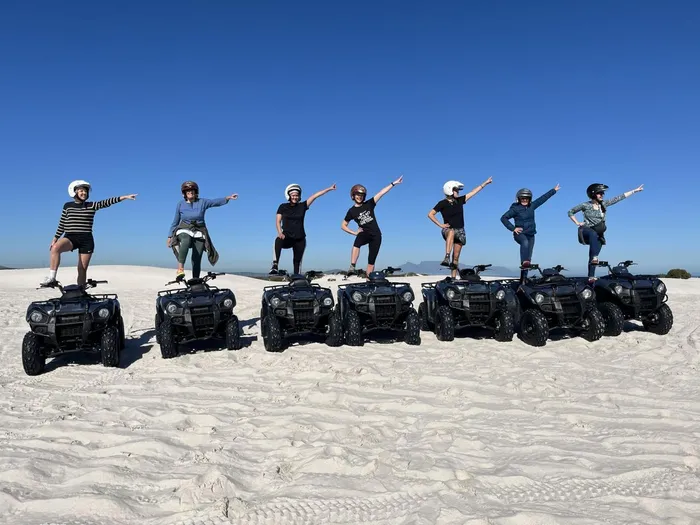
Quad biking on the sand dunes
Image: Sue Segar
Culinary Delights in Paternoster
En route to Paternoster from Cape Town, we turned towards Darling for lunch at the West Coast Smokehouse. This farm-based restaurant, part of the Living Colour collection run by the local Wood family, offers a concept I’d never heard of—a variety of meats and other dishes smoked in African hardwoods and paired with seasonal marinades.
We enjoyed a tour of the smokehouse to learn about the culinary skills they employ, based on an old tradition used by erstwhile travellers to preserve meat through smoking. Then it was time to try a selection of their meats. Their signature dishes include the 12-hour slow-smoked brisket, the eight-hour beef ribs, and six-hour smoked pork ribs. Who’d have guessed that macaroni baked in a smokehouse could taste so good?
After lunch, we continued to Paternoster, driving through the first flush of West Coast flowers, and arrived at our guesthouse—part of the off-grid Gonana Collection—in time for coffee and a freshly baked chocolate muffin. With Swedish owners and a strong Scandi influence in its décor, Gonana comprises eight properties, including guesthouses and stand-alone houses, all decorated to blend in with the surrounding seascape. We were delighted to see that ours was perfectly situated, overlooking beautiful Bekbaai beach.
Art and Culture in Paternoster
After checking in, we took a stroll around Paternoster to explore the gift and coffee shops and discovered the Art Shed at the Wharf. It not only features great artworks capturing Paternoster scenes but also trades in gorgeous handmade jewellery crafted by locals. Paternoster has a well-demarcated Art Route, designed to enable people to walk from gallery to gallery, which has become a popular activity for tourists.
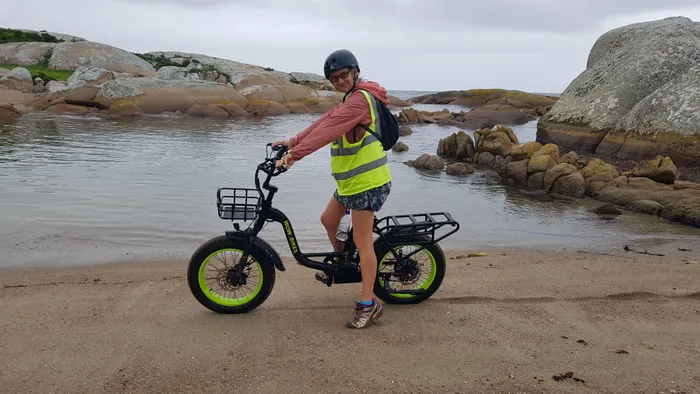
e-biking on the beach at Cape Columbine
Image: Sue Segar
I hadn’t been to Paternoster for years and found it as delightful and unspoilt as ever. One of South Africa’s oldest fishing villages, it still has the white-washed look of a fishing town thanks to the limestone used in many of the buildings. We were excited to spot the world-renowned restaurant, Wolfgat, which, under chef Kobus van der Merwe, was named Restaurant of the Year at the 2019 World Restaurant Awards, largely due to its innovative focus on foraging for ingredients like kelp and dune spinach, which abound in the surrounding veld and sea.
After an afternoon nap, we took an evening stroll to the Voorstrandt restaurant, a characterful tin fisherman’s cottage dating back more than 115 years, situated right on the beach. We enjoyed a few drinks on the outside balcony before indulging in the famous fish fare—from crayfish to oysters and seafood curry. I was keen on a huge plate of fish and chips, which hit the spot perfectly. After walking back across the beach in the winter moonlight, we went to bed with tummies full of local fish and hearts full of West Coast hospitality.
Adventures at Witzands Aquifer Nature Reserve
The next morning, we had breakfast and took a stroll to the wharf to collect our bikes from WOW E-Bikes, which, besides locally assembling and selling e-bikes built for African conditions, also offers guided e-bike experiences. We bravely opted to do both their routes—the guided beach ride, followed by a tour of Cape Columbine. It was my first time on an e-bike, and having never been much of a cyclist, I was amazed at how much easier it was to cycle with a bit of electric power.
Our ride started on Voorstrand beach, from where we cycled onto a second beach, Mosselbank, so called because of all the black mussels that can be found on the adjacent rocks. Standing beside our bikes on the beach, surrounded by seagulls swooping to find mussels, our guide gave us a history lesson on Paternoster, a village that has become hugely popular for tourists, not least for its whale season during November and December, but also for the flowers that bloom in spring and for its general beauty and hospitality.
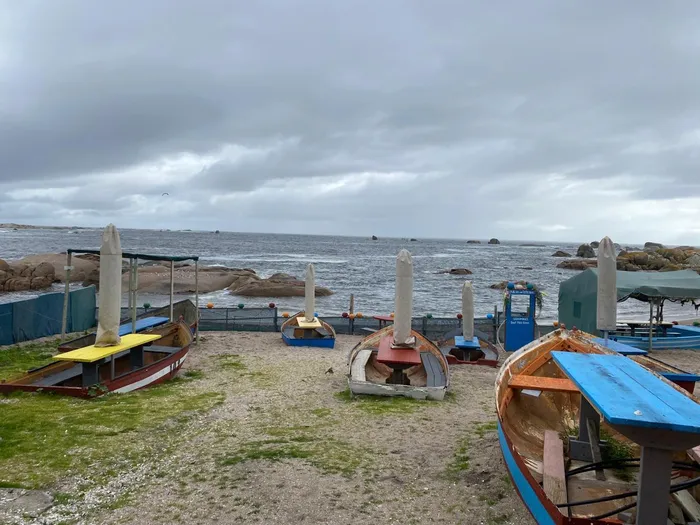
Small fishing boats used as restaurant tables in Paternoster
Image: Sue Segar
Previously, this area was occupied by San hunter-gatherers and was rich in wildlife, including hippos and leopards. Until about 300 years ago, Paternoster was called St Martins Bay. It was later renamed Paternoster, which means ‘Our Father’ in Latin, by shipwrecked sailors who gave thanks for making it safely to shore.
The village has, through the centuries, been well-known for various industries, including fish-liver oil and fertiliser factories, as well as crayfish canning factories and boatbuilding. It’s here that the Redro fishpaste factory was born. Our ride into the Cape Columbine reserve took us along a series of dirt roads and paths that wind through the typical vegetation of this area and along the rugged West Coast coastline. The reserve is characterised by numerous small beaches, big boulders coming out of the sea, and a landscape alive with different birds, including seagulls and sacred ibis. To our right was an island where hundreds of seals have made their home.
Soon after starting our cycle, the lighthouse came into view. Cape Columbine was historically known for its many shipwrecks. The reserve and the lighthouse are named after a British wooden ship, Columbine, which was shipwrecked in 1829. The lighthouse was built in 1936 and is the last manned lighthouse in South Africa. Our guide told us that, on a clear night, you can see the lighthouse for 60 kilometres, and it flashes every 15 seconds. We learned that every lighthouse has its own character and pattern of flashing its light. This is the first lighthouse ships from Europe see before arriving in South Africa.
Seeing the lighthouse close up was fascinating, and we made the most of the opportunity to take photographs of this beautiful structure in its natural surroundings. Lunch beside the fire at the beautifully situated restaurant, Seekombuis, was the perfect end to our ride, and we headed back to our rooms to rest our legs before our next adventure.
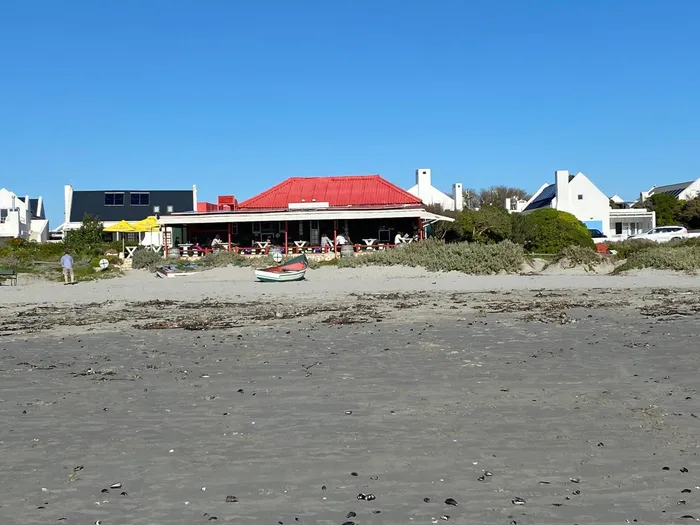
The fishing village of Paternoster on the West Coast.
Image: Supplied
The next day, en route back to Cape Town, we discovered the second surprise in the form of the Witzands Aquifer Nature Reserve. Rich in flora, Witzands is home to a range of endangered species such as Cape Flats Dune Strandveld and the Atlantis Sand Fynbos. It’s also known for its wildlife, including steenbok, small grey mongoose, and caracal. I was amazed to learn that below the surface of this reserve is a large underground natural aquifer that provides the communities of Atlantis, Mamre, and Pella with drinking water.
But it was clear from the crowds of people at the entrance that the main attraction of this beautiful reserve—with a spectacular view of Table Mountain—is the dunes. Our Breathless Nomad driving instructor guide gave us a quick lesson on how to drive these bulky machines, and off we went to navigate the fields of dunes on our own quad bikes. My nerves soon settled down after I realised they are easy to drive, and soon, I found the feeling of driving through this stretch of nature—with the sea and the mountain in full, beautiful view—an exhilarating experience.
It’s popular with international tourists too, and we were captivated by a large group of tourists from Dubai, who, accustomed to dunes back home, were hurtling confidently up and down the white sands with not a care in the world. After our quad biking experience, we took to the dunes with sandboards, also with a guide who showed us the best place to go for maximum whizzing speed. It was the perfect ending to our three-day escapade up the West Coast of Cape Town.
Gonana Collection, WOW E-Bikes, Breathless Nomad, and West Coast Smokehouse are members of Cape Country Routes, a collective of owner-managed accommodation and activity providers located along the Cape’s most scenic routes.